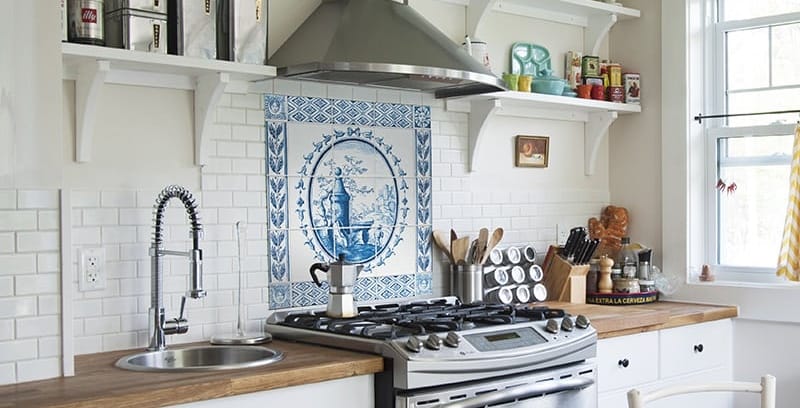When it comes to tile, homeowners face a dizzying array of choices. Although there are many types to choose from, glazed ceramic tile is a good choice for many reasons. So here, from the homeowner’s perspective, is how to select a ceramic tile.
Ceramic tile is a fired clay product. Glazed tiles often, but not always, undergo an additional firing. During this additional process, a layer of glaze is added and fired at very high temperatures. This non-porous layer is what gives glazed ceramic tiles many of their desirable qualities. And it’s the glazed surface that determines the tile’s finished color, design, and texture.

To find the tile best suited to the particular application, be prepared to answer several questions about the needs of your space and the look you are trying to achieve. Is the space indoors or outdoors? How much wear and tear will the area experience? Will the tile be on the floor or a wall, a countertop, or a backsplash? How large is the area? Do you want it to stand out or blend in?
Glazing makes the tiles moisture resistant and therefore suited to floor and wall spaces such as those found in general living areas, bathrooms, and kitchens. When it comes to the glaze itself, there are different options available that will influence the tile’s durability. Some varieties of glazed tile are fired at higher temperatures than others and therefore are harder as well. Then there is the issue of gloss: matte and satin finishes are generally harder than shiny finishes. A shinier surface will show more scratches. Glazed ceramic tiles are also a little more susceptible to cracking. If the glazed surface is scratched or damaged you cannot repair the tile, just replace it. This feature makes it better suited to areas with less wear and tear.
Safety is another consideration. The glazed surfaces are often glass-like and therefore are best used on walls, as they can be too slippery for certain floor applications.

Ceramic tile is relatively easy to keep clean because it can tolerate many different common household cleaning products. Typically, ceramic tile does not absorb fumes, odors, or smoke.
Glazed tiles are available in a greater array of colors. The color of the tile is derived from the glaze layer. Because the color is fired onto a tile’s glazed surface, ceramic tiles will not usually lose color or fade when exposed to sunlight.
Glazed ceramic meets the needs of many installations at a reasonable cost. As always, it’s a good idea to strike a balance between practicality and decorative taste when making your selection.
This post was written by a friend of Country Floors who is a fine example of the upscale homeowner. As such, we feel her observations are particularly relevant. That said, stop into one of our many locations for more help on how to select a ceramic tile.
